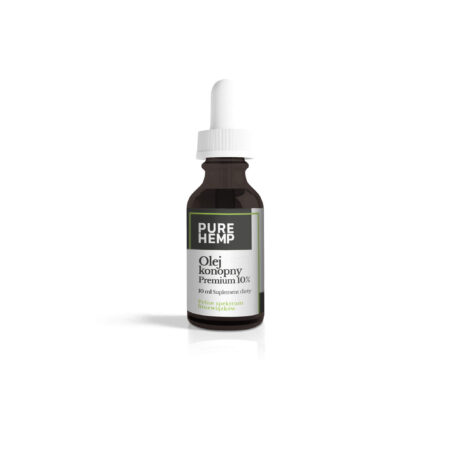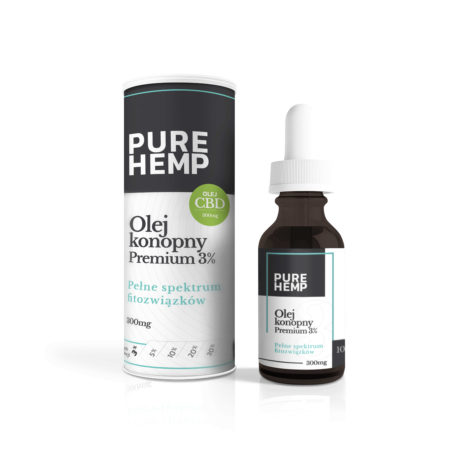What is PTSD?
PTSD stands for Post-Traumatic Stress Disorder. In Polish medical language it means Post-traumatic stress disorder. In a nutshell, it is a mental disorder that develops in people who have experienced traumatic events in their lives.
Most common symptoms of post-traumatic stress disorder it is a long list.
They are broadly divided into four clusters:
- Reminiscences that is, the re-experiencing of a traumatic event manifested by sudden, intrusive memories and nightmares;
- Avoiding the place, people, thoughts and activities surrounding the event up to the level of breaking off and avoiding relationships with family and friends
- Negative changes in value and belief systems regarding the world around them, excessive blaming of oneself or others for the causality of an event and/or loss of memory of even key moments in the course of events
- Persistent increased tension, agitation and alertness, may be combined with insomnia, emotional imbalance, hyperactivity and explosive reactions or a constant feeling of irritability
For more information, I refer you to the sources under the article and, of course, to a specialist for a diagnosis. Here, I would just like to add that PTSD is a very serious problem for any healthcare system. It generates enormous financial and social costs. It affects women more often than men. It is a common dysfunction among soldiers - veterans of armed conflicts. Untreated post-traumatic stress can lead to death by suicide.
Interesting facts and a pinch of statistics related to Post Traumatic Stress Syndrome:
- 70 per cent of adults will experience at least one traumatic event in their lives
- Up to 20 per cent of people who experience a traumatic event will develop PTSD
- In Poland, the problem is estimated to affect approximately 10-16% adults
- An estimated 5% of the population suffers from PTSD at this time
- Statistically, 1 in 9 women will experience post-traumatic stress disorder in their lifetime
- Men are on average 2-3 times less ill than women
- Post-traumatic Stress Syndrome can co-occur with other disorders: depression, anxiety trauma or psychosis
- Co-occurring addictions are common among patients
- If left untreated, the disorder can lead to suicide
More statistics and estimates can be found at the end of the article. Worth a look.
Risk factors for post-traumatic stress disorder symptoms
Wondering what are the risk factors for developing Post Traumatic Stress Spectrum Disorder? When is the risk greatest?
Well, the situation is as follows:
- Rape (49 per cent)
- Severe beating (31.9 per cent)
- Other cases of sexual harassment (23.7 per cent)
- Serious accident or injury, e.g. in a car or train accident (16.8 per cent)
- Shot or stabbed (15.4 per cent)
- Sudden, unexpected death of a family member or friend (14.3 per cent)
- Child's life-threatening illness (10.4 per cent)
- Witnessing a murder or severe beating (7.3 per cent)
- Natural disasters (3.8 per cent)
Percentages in brackets indicate the risk of developing PTSD if the event occurs.
Treatment methods for post-traumatic stress in 2021
If you are wondering how to treat PTSD it is worth knowing that prognosis is relatively good. Existing methods help to significantly minimise and even eliminate the symptoms of this disorder altogether. PTSD can and must be treated effectively in 2021.
Psychotherapy is the most effective tool next to pharmacological intervention by a psychiatrist to help PTSD sufferers. Unfortunately, the latter can and often does cause such severe side effects that patients not only complain, but increasingly avoid pharmacological drugs.
It is worth knowing that psychotherapy uses one of three methods:
- Prolonged Exposure (PE) method
- Cognitive Processing Therapy (CPT for short)
- EMDR therapy (Eye Movement Desensitisation and Reprocessing)
- Stress Inoculation Training (SIT)
- Internal Family System (IFS for short)
Primary the task of the psychotherapist is to bring about a change in the perception of the traumatic event in the patient's mind.
Research is being conducted around the world to improve current treatment methods, e.g. to reduce the duration of psychotherapy to as little as one week [see sources], or to discover new alternative diagnostic and therapeutic methods.
Naukowcy poszukują obecnie m.in. biomarkerów określających np. wzrost stężenia niektórych hormonów, które towarzyszą Zespołowi Stresu Pourazowego. Wysiłki badaczy koncentrują się na białku GLuA1, którego stężenie rośnie w obszarze mózgu odpowiedzialnym za odczuwanie lęku u myszy. Co ciekawe obniżenie poziomu GLuA1 powoduje u tych stworzeń zanik objawów zaburzenia. Badania kliniczne na ludziach są szykowane na 2022 rok. Jak wszystko pójdzie zgodnie z nadziejami to odkrycie to na pewno posłuży do opracowania nowych, skuteczniejszych leków o mniej dotkliwych skutkach ubocznych od tych stosowanych obecnie.
This trend includes the use of cannabinoids from medical cannabis and drops of CBD oil. While the former is not at all obvious, the latter is, on the contrary, becoming an increasingly viable support for conventional therapies.

Medical cannabis and CBD oils in the treatment of PTSD
Use of medical cannabis in the treatment of PTSD is not new. So is the use of CBD-rich hemp extracts. There are places in the world where hemp from the pharmacy or specialised shops is an officially approved medicine used by war veterans, among others.
The problem is that long-term use of THC-rich medical cannabis carries risks that are difficult to downplay from a medical point of view. It seems that there is still no clear answer to the questions of benefit-risk ratio in the case of cannabis smoking and more research is needed to unequivocally confirm the benefits of PTSD treatment with medical marijuana.
The case is slightly different for preparations rich in cannabidiol (CBD) with trace amounts of THC.
Here, important information for patients and psychotherapists working with the prolonged exposure method.
A freshly completed (10.2021) phase 1 clinical trial conducted by Veterans Affairs (the second largest department after the Department of Defense within the US federal government structure) showed that the people who were given CBD during prolonged exposure therapy progressed faster than patients who were not given CBD.
It is worth knowing that the study was double-blind, carried out on 136 participants, and the results are of high scientific and practical value. You can find the link here: https://clinicaltrials.gov/ct2/show/study/NCT03518801
CBD and such a compound is found in, among others. CBD oils are therefore a potentially effective support for PTSD psychotherapy.
Other scientific texts discuss two interesting aspects of cannabinoid use.
- The first one from 2016, published as a review of available clinical trial results, pointed to problems with the proper functioning of the endocannabinoid system as a potential cause of the development of Post Traumatic Stress Syndrome. Omega-3 and Omega-6 polyunsaturated acids play an important role in the healing process, and there are plenty of these acids in oils in a very good ratio.
- The second text, slightly older, from 2014, discussed the case of a 10-year-old girl traumatised by the experience of sexual abuse, who was administered a CBD oil as part of therapy. It has been effective in improving the quality of sleep and minimising the girl's anxiety.
There are many indications that The calming and endocannabinoid modulating properties of CBD hemp oils combined with their dietary value, can be an effective support in PTSD therapies reducing recovery time.
How serious a health problem is PTSD?
Finally, a bit of analytics. To estimate how serious a health problem Post-Traumatic Stress Disorder is in Poland, a pinch of fresh statistical data is needed.
How many adult Poles are there in Poland in 2021?
Current data from the Central Statistical Office (CSO) from 2021 indicates that a total of 37,581,370 people live in Poland. Given that people aged 20 years and over account for 80.49% of Poland's total population, it follows that adult Poles in Poland are 30 249 244. Of this number, 42.26% or 15 881 887 are women and 38.23% or 14 367 357 are men.
Source: own calculations based on data from Central Statistical Office report

The gender distinction is important because available reports show that women are two to three times more likely to suffer from PTSD than men.
As we know, an estimated 70% adults will experience traumatic events and 20% of these will develop PTSD (to varying degrees). This would equate to 4 234 894 cases (including those who have experienced or are experiencing an episode of Post-Traumatic Stress Disorder) with an estimated 5% of the population actively dealing with the problem at any given time, i.e. today, which translates to 1 879 068 cases.
These are my own calculations based on assumptions available in the sources. Please do not take them as "revealed truth".
If this figure could be confirmed in a major population-based study, we are dealing with a very common health problem, which is unlikely to receive proper treatment in many cases. This, in turn, could lead to the development of the disease and ultimately even to the suicidal death of people who could be helped but, for various reasons, do not make it to a doctor.
In such a situation, it is difficult to overestimate the role and potential of small bottles full of beneficial phytochemicals from hemp, of which CBD, as shown in the clinical trial discussed above, effectively supports and shortens patients' recovery.
Sources:
- https://www.psychiatry.org/patients-families/ptsd/what-is-ptsd
- https://www.sidran.org/wp-content/uploads/2018/11/Post-Traumatic-Stress-Disorder-Fact-Sheet-.pdf
- http://neuropsychologia.org/ptsd-zespol-stresu-pourazowego
- https://www.gov.pl/attachment/1b904f28-577f-4b05-bc57-c45ee0f7b8a0
- https://www.nimh.nih.gov/news/science-news/2018/a-shorter-but-effective-treatment-for-ptsd
- https://www.ptsd.va.gov/professional/articles/article-pdf/id1552911.pdf
- https://www.smithsonianmag.com/innovation/911-changed-how-doctors-treat-ptsd-180978573/
- https://clinicaltrials.gov/ct2/show/record/NCT03518801
- https://www.ncbi.nlm.nih.gov/pmc/articles/PMC5101100/
- https://www.ncbi.nlm.nih.gov/pmc/articles/PMC3951193/


